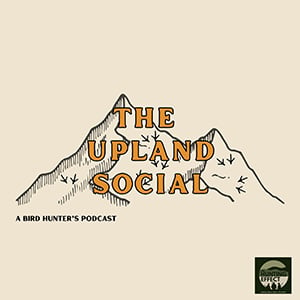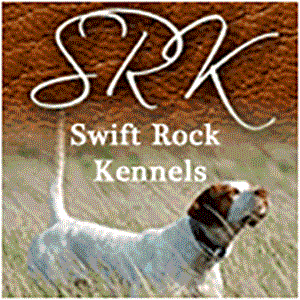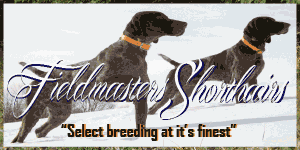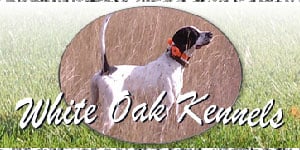Hunting Chromatic Snowbirds
In search of rooster pheasants after a snowfall
When snowstorms hit, hunting pressure fades, albeit for the hardcore pheasant hunter who’s not afraid to trek through the white stuff. Dealing with the competition from other wing-shooters is not the problem as it is locating suitable cover. Weather is the driving factor influencing where pheasants go during and after it snows. Hunters who focus on thick grassy fields and shelterbelts often will find that these places hold birds.
Traipsing Through Thick Grassy Fields
Hunters chasing winter ringnecks should concentrate on thick and weedy grasslands. Both small and large tracts. The northern and western edges will serve as snow catches; the southern and eastern sections of the field provide cover for pheasants. Any woody edge cover such as plum thickets should never be passed up as there’s potential for holed up roosters.
Grasslands that are dominated by switchgrass, big bluestem, Indian grass, Canada wild rye, or little bluestem are particularly hardy grasses. Tracts made up of these types attract pheasants as their rigid stalks hold up better than other plants when it snows. These tough grasses are able to withstand heavy amounts of snow, creating thermal pockets of cover.
Anytime a food source is nearby, it is always a good thing. Pheasants will utilize standing and harvested crop fields until buried by the snow. Standing grain fields like corn or milo are excellent places to target pheasants when it snows. Their thick and strong stalks can support the weight of heavy snow, creating snow caves for which pheasants can bury themselves and use them as cover. Pheasant tracks and other signs, such as tail drags, and wing depressions in snow offer clues as to whether the area is seeing any type of pheasant activity.
The topography of an area will also play a role when temperatures plummet and snowstorms roll in. Look for grassy tracts with depressions such as shallow draws, waterways, or ditches which may harbor concentrations of birds looking to get out of wind and elements.

Hunting Shelterbelts
While cattails, switchgrass, and small plots of trees and island thickets often harbor late-season birds, ringnecks require more substantial cover when severe winter storms strike. Shelterbelts offer a safe place for pheasants to congregate and hold up ‘til it’s suitable to leave the confines of the protective cover it provides.
After the Dust Bowl of the 1930s the federal government implemented the Shelterbelt Project. Its purpose was to slow soil erosion and evaporation by the planting of trees on farms. Today, shelterbelts benefit more than just crops; they provide a safe haven for wildlife.
Shelter belts are a barrier of trees or shrubs planted or naturally growing to protect an area. Usually, they are set up in and around farm fields to shield them from intense winds and snow. Hunting these thin strips of timber can pay off big.
The Thick Stuff. Shelter belts make the best pheasant cover for the worst winter weather. The ideal shelterbelt has a food plot nearby and consists of at least fourteen to sixteen rows of shrubs and trees. This creates a barrier. Narrower shelterbelts can get covered with snowdrifts, which does nothing in providing ideal cover and protection, thus making them a waste of time to hunt. Pheasants will be looking for places that keep out the snow.
Shrubs and Trees. Creating or growing the ideal shelter belt is a science. Each type of tree serves a purpose. Shelter belts should have an outer row of shrubs and small trees such as chokeberry, mountain ash, crabapple, plum, or Washington hawthorn. This is flanked by up to a couple of rows of tall hardwoods. Trees such as black walnut, ash, oak, poplar, or maple are a good choices. By combining the smaller and larger trees, it reduces the effects of winter winds and helps keep out snow by protecting ground cover as well as those pheasants’ hunters are after.
Evergreens Inside. The shelter belts innermost section should consist of at least four rows of conifers. This provides pheasants with ground-level cover and helps shield them from the winds. This interior area should be free of snow. Most cedars, spruces, and Douglas firs provide good low-growth cover. When a winter storm hits, pheasants will flock to shelterbelts and remain there until the storm passes. Afterwards, birds will begin feeding in nearby food plots again to replenish much needed energy loss.
Shelter belts should never be overlooked by bird hunters. These strips made up of a variety of trees and shrubs are often 30-40 yards wide. They provide shelter and also hidden travel corridors. This will be evident when snow is on the ground and hunters see the vast highway system of pheasant foot traffic. The best tactic to hunt shelter belts is to have at least a hunter on each side as they drive or push birds towards the end. Ideally the dogs are sent in, to pressure pheasants towards the ends of the shelterbelt or cause them to flush out the sides to awaiting hunters. If there are enough hunters, position one or two on either end to act like blockers.
Hunters should be prepared to walk through potentially thick snow drifts. Gaiters should be worn to help keep snow out. There’s even been stories about some pheasant hunters strapping on snowshoes…now that, is hardcore! As with late season pheasant hunting, shooting a heavier load is recommended. Try 4s, 5s, and 6s or a combination for far flushing roosters as it takes more of a wallop to bring down late season snowbirds.
Related Aritlces
`Upland` Chaps
The snow had begun to accumulate. Measuring just high enough that each boot step would certainly put me into almost ten inches of the white stuff. The landscape was wet with freshly fallen snow. Its weight had pushed down all the dried, tan switchgrass that fall and winter brings. I opened the back half of the truck’s cab to get to my gear bag. I unzipped the main compartment and pulled out matching tan chaps. They were quickly put on over my pants and secured. An hour into my hunt, I quickly found the chaps sole purpose that day was to keep me dry. I had pushed though snow-laden grass, flushing roosters who had taken to burrowing themselves in small openings to get out of the weather. If I had not worn chaps, I would’ve been one wet and cold bird hunter.
Six “Military” Style Methods to Outsmart Late
By now late season roosters have been hunted hard, so they’re more wary. Hardened and experienced, these birds flush at greater distances at the mere sound or sight of danger. Add paranoia and the uncanny ability to become elusive and scarce when things get dicey. Veteran roosters know that slow birds of mind and wing are shot. Taking to the air is the last option as mature birds stay grounded and use their feet instead of wings to escape.






















